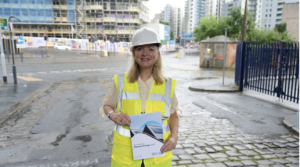Route map to an enabling state
 To improve outcomes we need to give communities and individuals more control of their own wellbeing, in a way that means disadvantaged communities are not left behind. Martyn Evans, chief executive of the Carnegie UK Trust, explains how.
To improve outcomes we need to give communities and individuals more control of their own wellbeing, in a way that means disadvantaged communities are not left behind. Martyn Evans, chief executive of the Carnegie UK Trust, explains how.
Our relationship with government has a significant influence on both our personal and collective wellbeing. The introduction of the welfare state following the second world war has resulted in major improvements in the wellbeing of the majority of the population.
But these improvements have not been uniform. Stubborn inequalities remain and are increasing. For a significant minority of the population it is apparent that the state has consistently failed to deliver positive change. There are limitations to the traditional, top-down model of public service delivery which require us to find new approaches to tackle deeply entrenched inequalities.
In recent years we have seen an increasing focus in the UK and Ireland on public policies that are more engaged, responsive and give individuals and communities the opportunity to play a more active role. We have described these changes as a shift towards a more ‘enabling state’.
Evidence from organisations such as the Glasgow Centre for Population Health shows that having a sense of individual control; strong social networks; and opportunities to participate in volunteering are important components of improving wellbeing.
As such, this shift that we are witnessing is largely a positive one. The growth in community ownership of land (half a million acres of land in Scotland is now owned by the communities who live there) and other assets such as village shops and pubs offer very tangible examples of what can happen when communities are given greater control over their own future. New community rights provided for in the localism act of 2011 and similar provisions in the community empowerment (Scotland) bill are further signals of the direction of travel.
However, the shift towards a new type of relationship with the state is not without risk. Changes are occurring in a piecemeal way and there is often more we can do to give communities more control, particularly of public services. It is critical that as changes occur, we recognise that without appropriate investment and support the very communities who could benefit most a more enabling approach may be poorly positioned to take advantage of the new opportunities.
Over the past two years the Carnegie UK Trust has sought to use its position as an independent foundation to open up a debate and explore how the positive elements of an enabling state can be best realised, and how the risks can be mitigated. Led by Carnegie fellow Sir John Elvidge, former permanent secretary to the Scottish government, we spent 18 months with stakeholders in the UK and Ireland and further afield exploring how the relationship between government, citizens and communities is changing and what kind of challenges and opportunities this presents.
We have now published our short guide A route map to an Enabling State, written by Sir John. The guide sets out eight steps that governments can take to help communities take more control and make this a success.The guide is intentionally colourful and accessible and although it is aimed primarily at those in the public sector we hope it will be of interest to anyone working with citizens and communities.
So what are the lessons that have already interested the Organisation for Economic Co-operation and Development (OECD)? Below we outline what Sir John calls a route map to putting people ‘in control of their own lives’:
- Get out of the way: stop doing things that discourage individuals, families and communities from exercising control over their own lives or contributing to shared wellbeing.
- Give people permission: favour ways of working that encourage people to take responsibility for more aspects of their lives and engage supportively with others.
- Help people to help each other: facilitate mutual support within and between communities.
- Help people to do more: boost mutual support by transferring assets to communities or giving them scope to acquire assets.
- Give people more rights: legislative and financial frameworks work to reinforce permission and encouragement.
- Enablement is the new normal: new policies and programmes should be designed so that communities and individuals are engaged and in control.
- Invest in disadvantaged communities: not everyone who wants to help themselves or others has the means to do so. Government should invest in rebalancing inequalities that exist within and between communities in terms of access to financial resources and in ‘softer’ resources such as education and social networks.
- A strategic focus on wellbeing: A flexible, holistic and preventative approach to public services should be taken.
- Sir John’s new guide A Route map to an Enabling State is available to download here. We would be delighted to hear your feedback. Please get in touch with Jenny Brotchie, policy officer jenny@carnegieuk.org or tweet us at @CarnegieUKTrust and #EnablingState















